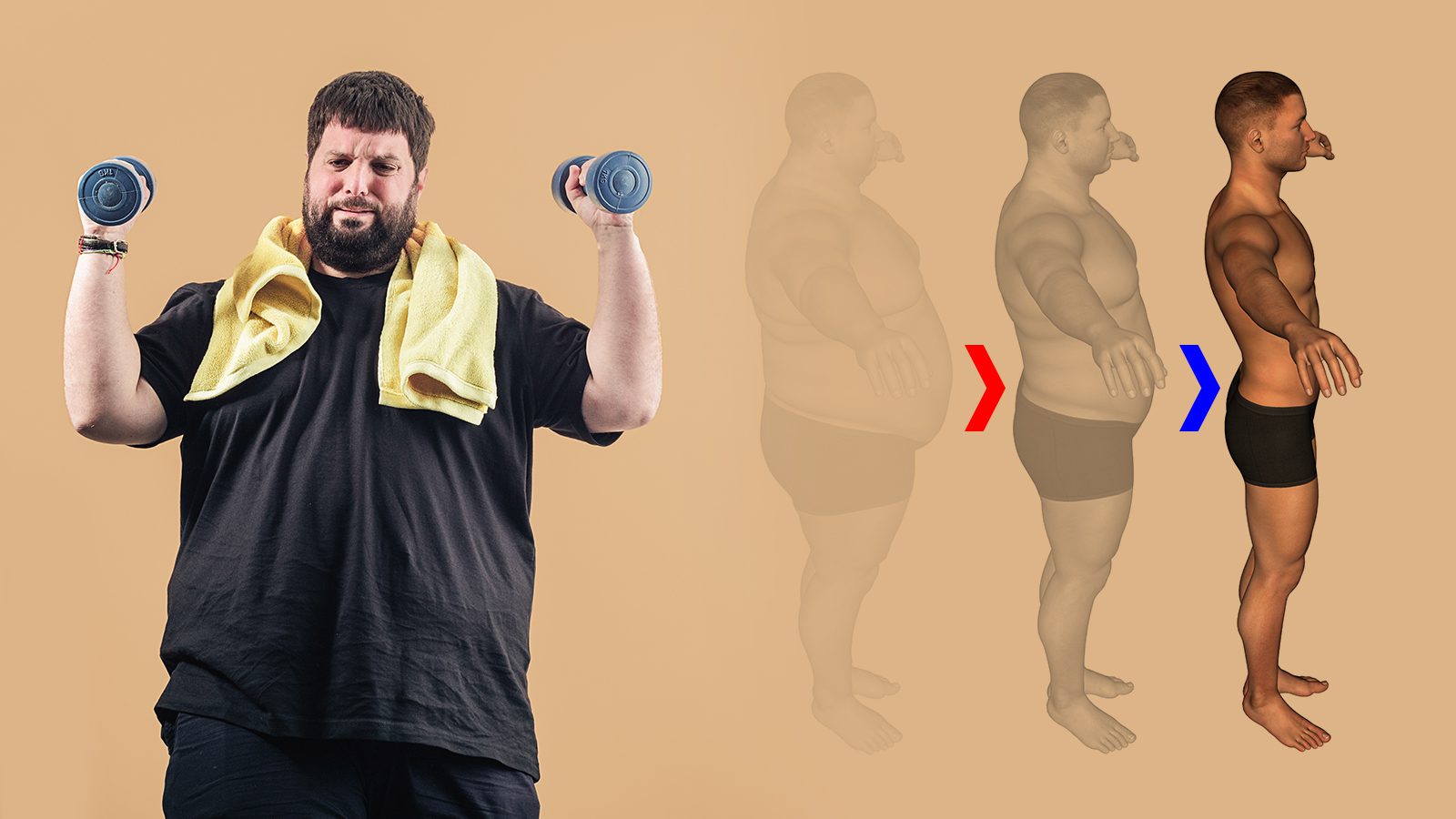How strength training supports losing weight.
Learn from expert trainers as they explain the proper techniques and strategies for strength training. Understanding the benefits and how to do weightlifting for weight loss can help you achieve your goals.
Weightlifting for weight loss is powerful because it helps burn fat and build muscle simultaneously. You can use strength training programs, free weights, circuit training, and more to help with your weight loss efforts.
Expert weightlifting and fat loss tips can help you lose weight and build strength. It offers benefits that promote your overall well-being and health. Before starting weightlifting for weight loss, consult a professional for guidance.
Understanding Weightlifting for Weight Loss:
Weightlifting or resistance training is helpful for fat burning and a metabolism boost. It boosts your weight-loss effort and promotes long-term weight management. During these exercises, you’ll typically use weights, including dumbbells, barbells, or weight machines.
Weightlifting for weight loss builds muscle, increasing your resting metabolic rate to burn more fat and calories when walking, working, sleeping, or sitting. Weightlifting offers more than just weight loss benefits. It also improves muscle strength, tone, flexibility, and balance.

Physical benefits of weightlifting for weight loss
You should work all major muscle groups each week, building up to working them out multiple times per week. When doing weightlifting for weight loss, you’ll want to target your:
- abs
- back
- chest
- biceps
- forearms
- hamstrings
- quads
- calves
- shoulders
- traps
- triceps
Setting Realistic Weight Loss Goals:
Goal setting and progress tracking can help you reach your goal weight, but the goals must be realistic. Using these goals with weightlifting for weight loss is the best way to progress toward a healthy lifestyle. A sustainable approach helps you stay motivated and more likely to stick to your plan.
Realistic weight loss goals also prevent burnout because they aren’t too intense and won’t take long to achieve. Without realistic goals, you might get discouraged from not reaching them and give up entirely.
Setting goals when starting
You’ll want to use a sustainable weight loss approach for the best results that last long-term. Here are things to consider when setting your weight loss goals:
- Set a healthy weight loss rate: You should aim to lose one to two pounds weekly. Losing more than two pounds weekly for an extended time could increase your risk of health complications. You might lose more than two pounds occasionally, especially when starting a consistent routine, but it’ll quickly taper off.
- Set realistic, short-term goals: You may have a long-term goal you want to reach, but short-term achievements help encourage motivation and help you progress. Consider setting a goal of five to 10 percent of your starting weight, and continue setting more short-term goals as you achieve the first one.
- Be specific: Your weight loss goals should be measurable, or you won’t be able to track your progress effectively. Rather than simply saying you want to lose weight, set a number to work toward. Your number could include pounds lost, inches lost, body mass index, or clothing sizes.
- Make them sustainable: Forming sustainable habits can help you maintain your weight loss once you reach your goal. It allows you to develop life-long habits that improve your health and well-being.
Compound Exercises for Full-Body Engagement:
Compound exercises involve multi-joint movements, including squats, deadlifts, and bench presses. These compound lifts engage multiple muscle groups and maximize calorie burn, helping you progress toward your goals. They also promote muscle activation, coordination, and overall fitness levels.
They’re also good exercises for mastering fundamental movements to prevent injury and help you master advanced moves later. Compound exercises promote increased calorie burn because they involve multiple muscle groups simultaneously.
Incorporating High-Intensity Interval Training (HIIT):
Integrating high-intensity interval training (HIIT) involves starting with a warm-up through dynamic stretching or light cardio, including jogging or cycling. Then, you’ll alternate quick bursts of intense exercise with lower-intensity exercises for a brief recovery in between.
Some ideas to start include high-intensity sprints, burpees, jumping jacks, and low-intensity walking or cycling. You’ll also have a cool-down period at the end that could involve static stretching or light cardio.
Incorporating HIIT workouts with weightlifting can enhance your weight-loss efforts by improving cardiovascular fitness. They can promote faster results while improving aerobic capacity and cardiac function.
These exercises promote calorie-torching and enhance your overall metabolic rate. They can help you burn more fat, while weightlifting helps maintain and build muscle. Using them together allows you to experience the benefits of both.
You can also use weights during a HIIT session to intensify your workout. Consider implementing HIIT workouts once or twice a week to embrace the benefits of using it with weightlifting.
Progressive Overload and Strength Progression:
Progressive overload involves progression in strength training, gradually increasing resistance and challenging your muscles. It promotes weight loss, muscle development, strength, and increased calorie expenditure.
Starting small is recommended, but once you get the hang of weightlifting for weight loss, you should increase the intensity. It helps you continually see results as you challenge yourself to do more as you progress. You can increase the weight or number of repetitions or decrease rest time between sets to promote results.
Gradually increasing the intensity can challenge your muscles to maximize development. As you build more muscle, you’ll burn more calories at rest. It also helps you avoid plateaus because your body won’t fully adapt before you increase intensity.
Proper Form and Technique:
Using proper exercise form and technique during weightlifting for weight loss can make a difference in your efforts. Proper form promotes movement quality and injury prevention while helping you achieve the best results. It also ensures you target the intended muscles to improve exercise efficiency.
Some of the best ways you can ensure proper form include:
- learning the correct technique for each exercise
- focusing on the position of your body
- using your core for stability
- being mindful of the weight movement
- properly aligning your joints
- watching yourself in a mirror
Consider temporarily decreasing your weight load to pay attention to your form. It’s easier to determine if you should change your posture when you aren’t pushing yourself too hard.

Balancing Resistance Training and Cardiovascular Exercise:
Balancing resistance training during cardiovascular exercise is beneficial for weight loss. It helps with losing body fat while building muscle mass. Increased muscle mass leads to improved metabolism at rest, resulting in higher calorie burn.
When you incorporate cardio and weightlifting into your exercise routine, it offers an optimal combination. You’ll get a well-rounded approach with exercise variety that maximizes your fat-burning potential.
Nutrition and Recovery:
Proper nutrition and muscle recovery can help with your weightlifting for weight loss efforts. Maintaining a balanced diet, implementing nutrient timing, and getting adequate rest encourage optimal recovery and support your weight loss goals.
Allowing your muscles to recover is essential to a healthy weightlifting experience. Recovery means your muscles have had a chance to rest and recover through good nutrition and adequate sleep.
Your body must have enough energy to support your workout, so consuming nutritious foods is essential. Focus on consuming enough:
- carbohydrates
- proteins
- fats
- vitamins
- minerals
Nutrient timing is when you eat at specific times based on your exercise routine to give you energy before and replenish your nutrients afterward. It helps you optimize your nutrient intake and utilization to boost your efforts. Consider carbohydrates and protein 30 minutes to three hours before exercise and again within 30 minutes to two hours after.
You also must ensure you drink enough water because muscle recovery requires hydration. If you’re deficient in vitamins or nutrients, consider taking supplements to make up for it.
Consistency and Progress Tracking:
Exercise consistency is essential for weightlifting for weight loss and maintenance. Tracking results also helps as it promotes accountability to help you stay motivated and accountable.
Monitoring your performance promotes long-term weight loss success because it allows you to see what works for you. Choosing exercises you enjoy and can include in your regular exercise routine can help with consistency. When you look forward to the workout, you’ll be more likely to do it regularly.
You’ll see your results better if you choose one day a week to track your weight or measurements. Checking daily can be discouraging because your weight can fluctuate, while weekly check-ins allow you to see long-term progress.
Seeking Professional Guidance:
Seeking professional guidance when starting weightlifting for weight loss can help you achieve optimal results. A certified personal trainer or fitness coach can provide individualized programs based on your needs and goals.
They’ll offer proper guidance and give support throughout your weight loss journey. Professional guidance also prevents your risk of injury because it can help you maintain good form.
A professional will provide feedback to ensure you’re doing exercises correctly for optimal results without complications. They’ll guide you through progression to help you challenge yourself without experiencing overexertion.
Working with a personal trainer can also help you avoid plateaus. They’ll introduce new exercises or vary your workout routine to enhance results.

Final Thoughts on Weightlifting for Weight Loss and Strength
Weightlifting for weight loss is an effective way to reach your goals and look and feel your best. Use these strategies for weight loss with weightlifting to help you look and feel your best.
Combining cardio and weightlifting for weight loss offers increased benefits, so vary your routine regularly. Focus on proper form and consider seeking professional guidance to optimize your results.
Stay motivated by tracking your progress and doing exercises you enjoy. You can achieve your goals and feel better about yourself while improving your health.




















